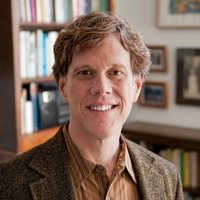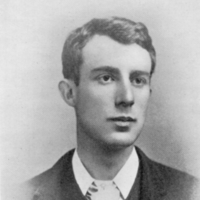
Info
Judith décapitant Holopherne
Artemisia Gentileschi
1620 - 1621
Uffizi Gallery
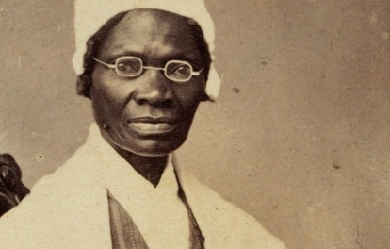
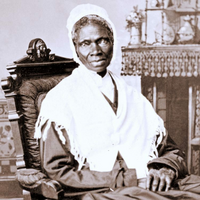
Sojourner Truth (born Isabella ("Bell") Baumfree; C. 1797– November 26, 1883) was an African-American abolitionist and women’s rights activist. Truth was born into slavery in Swartekill, Ulster County, New York, but escaped with her infant daughter to freedom in 1826. After going to court to recover her son, in 1828 she became the first black woman to win such a case against a white man. She gave herself the name Sojourner Truth in 1843 after she became convinced that God had called her to leave the city and go into the countryside “testifying the hope that was in her.” Her best-known speech was delivered extemporaneously, in 1851, at the Ohio Women’s Rights Convention in Akron, Ohio. The speech became widely known during the Civil War by the title “Ain’t I a Woman?,” a variation of the original speech re-written by someone else using a stereotypical Southern dialect; whereas Sojourner Truth was from New York and grew up speaking Dutch as her first language. During the Civil War, Truth helped recruit black troops for the Union Army; after the war, she tried unsuccessfully to secure land grants from the federal government for former slaves. In 2014, Truth was included in Smithsonian magazine’s list of the "100 Most Significant Americans of All Time". Early years Truth was one of the ten or twelve children born to James and Elizabeth Baumfree (or Bomefree). Colonel Hardenbergh bought James and Elizabeth Baumfree from slave traders and kept their family at his estate in a big hilly area called by the Dutch name Swartekill (just north of present-day Rifton), in the town of Esopus, New York, 95 miles (153 km) north of New York City. Charles Hardenbergh inherited his father’s estate and continued to enslave people as a part of that estate’s property. When Charles Hardenbergh died in 1806, nine-year-old Truth (known as Belle), was sold at an auction with a flock of sheep for $100 to John Neely, near Kingston, New York. Until that time, Truth spoke only Dutch. She later described Neely as cruel and harsh, relating how he beat her daily and once even with a bundle of rods. Neely sold her in 1808, for $105, to Martinus Schryver of Port Ewen, a tavern keeper, who owned her for eighteen months. Schryver sold her in 1810 to John Dumont of West Park, New York. Although this fourth owner was kindly disposed toward her, considerable tension existed between Truth and Dumont’s second wife, Elizabeth Waring Dumont, who harassed her and made her life more difficult. (John Dumont’s first wife, Sarah “Sally” Waring Dumont (Elizabeth’s sister), died around 1805, five years before he bought Truth.) Around 1815, Truth met and fell in love with a slave named Robert from a neighboring farm. Robert’s owner (Charles Catton, Jr., a landscape painter) forbade their relationship; he did not want the people he enslaved to have children with people he was not enslaving, because he would not own the children. One day Robert sneaked over to see Truth. When Catton and his son found him, they savagely beat Robert until Dumont finally intervened, and Truth never saw Robert again. He later died some years later, perhaps as a result of the injuries, and the experience haunted Truth throughout her life. Truth eventually married an older slave named Thomas. She bore five children: James, her firstborn, who died in childhood, Diana (1815), fathered by either Robert or John Dumont, and Peter (1821), Elizabeth (1825), and Sophia (ca. 1826), all born after she and Thomas united. Freedom The state of New York began, in 1799, to legislate the abolition of slavery, although the process of emancipating those people enslaved in New York was not complete until July 4, 1827. Dumont had promised to grant Truth her freedom a year before the state emancipation, “if she would do well and be faithful.” However, he changed his mind, claiming a hand injury had made her less productive. She was infuriated but continued working, spinning 100 pounds of wool, to satisfy her sense of obligation to him. Late in 1826, Truth escaped to freedom with her infant daughter, Sophia. She had to leave her other children behind because they were not legally freed in the emancipation order until they had served as bound servants into their twenties. She later said “I did not run off, for I thought that wicked, but I walked off, believing that to be all right.” She found her way to the home of Isaac and Maria Van Wagenen in New Paltz, who took her and her baby in. Isaac offered to buy her services for the remainder of the year (until the state’s emancipation took effect), which Dumont accepted for $20. She lived there until the New York State Emancipation Act was approved a year later. Truth learned that her son Peter, then five years old, had been sold illegally by Dumont to an owner in Alabama. With the help of the Van Wagenens, she took the issue to court and in 1828, after months of legal proceedings, she got back her son, who had been abused by those who were enslaving him. Truth became one of the first black women to go to court against a white man and win the case. Truth had a life-changing religious experience during her stay with the Van Wagenens, and became a devout Christian. In 1829 she moved with her son Peter to New York City, where she worked as a housekeeper for Elijah Pierson, a Christian Evangelist. While in New York, she befriended Mary Simpson, a grocer on John Street who claimed she had once been enslaved by George Washington. They shared an interest in charity for the poor and became intimate friends. In 1832, she met Robert Matthews, also known as Prophet Matthias, and went to work for him as a housekeeper at the Matthias Kingdom communal colony. Elijah Pierson died, and Robert Matthews and Truth were accused of stealing from and poisoning him. Both were acquitted of the murder, though Matthews was convicted of lesser crimes, served time, and moved west. In 1839, Truth’s son Peter took a job on a whaling ship called the Zone of Nantucket. From 1840 to 1841, she received three letters from him, though in his third letter he told her he had sent five. Peter said he also never received any of her letters. When the ship returned to port in 1842, Peter was not on board and Truth never heard from him again. “The Spirit Calls Me” 1843 was a turning point for Truth. She became a Methodist, and on June 1, she changed her name to Sojourner Truth. She told friends: “The Spirit calls me, and I must go” and left to make her way traveling and preaching about the abolition of slavery. At that time, Truth began attending Millerite Adventist campmeetings. However, that did not last since Jesus failed to appear in 1843 and then again in 1844. Like many others disappointed, Truth distanced herself from her Millerite friends for a while. In 1844, she joined the Northampton Association of Education and Industry in Northampton, Massachusetts. Founded by abolitionists, the organization supported women’s rights and religious tolerance as well as pacifism. There were, in its four-and-a-half year history, a total of 240 members, though no more than 120 at any one time. They lived on 470 acres (1.9 km2), raising livestock, running a sawmill, a gristmill, and a silk factory. While there, Truth met William Lloyd Garrison, Frederick Douglass, and David Ruggles. In 1846, the group disbanded, unable to support itself. In 1845, she joined the household of George Benson, the brother-in-law of William Lloyd Garrison. In 1849, she visited John Dumont before he moved west. Truth started dictating her memoirs to her friend Olive Gilbert, and in 1850 William Lloyd Garrison privately published her book, The Narrative of Sojourner Truth: A Northern Slave. That same year, she purchased a home in what would become the village of Florence in Northampton for $300, and spoke at the first National Women’s Rights Convention in Worcester, Massachusetts. In 1854, with proceeds from sales of the Narrative and cartes-de-visite entitled “I sell the shadow to support the substance,” she paid off the mortgage held by her friend from the Community, Samuel L. Hill. “Ain’t I a Woman?” In 1851, Truth joined George Thompson, an abolitionist and speaker, on a lecture tour through central and western New York State. In May, she attended the Ohio Women’s Rights Convention in Akron, Ohio, where she delivered her famous extemporaneous speech on women’s rights, later known as “Ain’t I a Woman.” Her speech demanded equal human rights for all women as well as for all blacks. The convention was organized by Hannah Tracy and Frances Dana Barker Gage, who both were present when Truth spoke. Different versions of Truth’s words have been recorded, with the first one published a month later by Marius Robinson, a newspaper owner and editor who was in the audience. Robinson’s recounting of the speech included no instance of the question “Ain’t I a Woman?” Twelve years later in May 1863, Gage published another, very different, version. In it, Truth’s speech pattern had characteristics of Southern slaves, and the speech included sentences and phrases that Robinson didn’t report. Gage’s version of the speech became the historic standard version, and is known as “Ain’t I a Woman?” because that question was repeated four times. It is highly unlikely that Truth’s own speech pattern was Southern in nature, as she was born and raised in New York, and she spoke only Dutch until she was nine years old. In contrast to Robinson’s report, Gage’s 1863 version included Truth saying her 13 children were sold away from her into slavery. Truth is widely believed to have had five children, with one sold away, and was never known to boast more children. Gage’s 1863 recollection of the convention conflicts with her own report directly after the convention: Gage wrote in 1851 that Akron in general and the press in particular were largely friendly to the woman’s rights convention, but in 1863 she wrote that the convention leaders were fearful of the “mobbish” opponents. Other eyewitness reports of Truth’s speech told a calm story, one where all faces were “beaming with joyous gladness” at the session where Truth spoke; that not “one discordant note” interrupted the harmony of the proceedings. In contemporary reports, Truth was warmly received by the convention-goers, the majority of whom were long-standing abolitionists, friendly to progressive ideas of race and civil rights. In Gage’s 1863 version, Truth was met with hisses, with voices calling to prevent her from speaking. Over the next 10 years, Truth spoke before dozens, perhaps hundreds, of audiences. From 1851 to 1853, Truth worked with Marius Robinson, the editor of the Ohio Anti-Slavery Bugle, and traveled around that state speaking. In 1853, she spoke at a suffragist “mob convention” at the Broadway Tabernacle in New York City; that year she also met Harriet Beecher Stowe. In 1856, she traveled to Battle Creek, Michigan, to speak to a group called the “Friends of Human Progress.” In 1858, someone interrupted a speech and accused her of being a man; Truth opened her blouse and revealed her breasts. Other notable speeches Northampton Camp Meeting—1844, Northampton, Massachusetts: At a camp meeting where she was participating as an itinerant preacher, a band of “wild young men” disrupted the camp meeting, refused to leave, and threatening to burn down the tents. Truth caught the sense of fear pervading the worshipers and hid behind a trunk in her tent, thinking that since she was the only black person present, the mob would attack her first. However, she reasoned with herself and resolved to do something: as the noise of the mob increased and a female preacher was “trembling on the preachers’ stand,” Truth went to a small hill and began to sing “in her most fervid manner, with all the strength of her most powerful voice, the hymn on the resurrection of Christ." Her song, “It was Early in the Morning,” gathered the rioters to her and quieted them. They urged her to sing, preach, and pray for their entertainment. After singing songs and preaching for about an hour, Truth bargained with them to leave after one final song. The mob agreed and left the camp meeting. Abolitionist Convention—1840s, Boston, Massachusetts: William Lloyd Garrison invited Sojourner Truth to give a speech at an annual antislavery convention. Wendell Phillips was supposed to speak after her, which made her nervous since he was known as such a good orator. So Truth sang a song, “I am Pleading for My people,” which was her own original composition sung to the tune of Auld Lang Syne. Mob Convention—September 7, 1853: At the convention, young men greeted her with "a perfect storm,” hissing and groaning. In response, Truth said, “You may hiss as much as you please, but women will get their rights anyway. You can’t stop us, neither”. Sojourner, like other public speakers, often adapted her speeches to how the audience was responding to her. In her speech, Sojourner speaks out for women’s rights. She incorporates religious references in her speech, particularly the story of Esther. She then goes on to say that, just as women in scripture, women today are fighting for their rights. Moreover, Sojourner scolds the crowd for all their hissing and rude behavior, reminding them that God says to “Honor thy father and thy mother.” American Equal Rights Association—May 9–10, 1867: Her speech was addressed to the American Equal Rights Association, and divided into three sessions. Sojourner was received with loud cheers instead of hisses, now that she had a better-formed reputation established. The Call had advertised her name as one of the main convention speakers. For the first part of her speech, she spoke mainly about the rights of black women. Sojourner argued that because the push for equal rights had led to black men winning new rights, now was the best time to give black women the rights they deserve too. Throughout her speech she kept stressing that “we should keep things going while things are stirring” and fears that once the fight for colored rights settles down, it would take a long time to warm people back up to the idea of colored women’s having equal rights. In the second sessions of Sojourner’s speech, she utilized a story from the Bible to help strengthen her argument for equal rights for women. She ended her argument by accusing men of being self-centered, saying, “man is so selfish that he has got women’s rights and his own too, and yet he won’t give women their rights. He keeps them all to himself.” For the final session of Sojourner’s speech, the center of her attention was mainly on women’s right to vote. Sojourner told her audience that she owned her own house, as did other women, and must therefore pay taxes. Nevertheless, they were still unable to vote because they were women. Black women who were enslaved were made to do hard manual work, such as building roads. Sojourner argues that if these women were able to perform such tasks, then they should be allowed to vote because surely voting is easier than building roads. Eighth Anniversary of Negro Freedom—New Year’s Day, 1871: On this occasion the Boston papers related that “...seldom is there an occasion of more attraction or greater general interest. Every available space of sitting and standing room was crowded". She starts off her speech by giving a little background about her own life. Sojourner recounts how her mother told her to pray to God that she may have good masters and mistresses. She goes on to retell how her masters were not good to her, about how she was whipped for not understanding English, and how she would question God why he had not made her masters be good to her. Sojourner admits to the audience that she had once hated white people, but she says once she met her final master, Jesus, she was filled with love for everyone. Once enslaved folks were emancipated, she tells the crowd she knew her prayers had been answered. That last part of Sojourner’s speech brings in her main focus. Some freed enslaved people were living on government aid at that time, paid for by taxpayers. Sojourner announces that this is not any better for those colored people than it is for the members of her audience. She then proposes that black people are given their own land. Because a portion of the South’s population contained rebels that were unhappy with the abolishment of slavery, that region of the United States was not well suited for colored people. She goes on to suggest that colored people be given land out west to build homes and prosper on. On a mission In 1856, Truth bought a neighboring lot in Northampton, but she did not keep the new property for long. On September 3, 1857, she sold all her possessions, new and old, to Daniel Ives and moved to Battle Creek, Michigan, where she rejoined former members of the Millerite Movement who had formed the Seventh-day Adventist Church. Antislavery movements had begun early in Michigan and Ohio. Here, she also joined the nucleus of the Michigan abolitionists, the Progressive Friends, some who she had already met at national conventions. According to the 1860 census, her household in Harmonia included her daughter, Elizabeth Banks (age 35), and her grandsons James Caldwell (misspelled as “Colvin”; age 16) and Sammy Banks (age 8). During the Civil War, Truth helped recruit black troops for the Union Army. Her grandson, James Caldwell, enlisted in the 54th Massachusetts Regiment. In 1864, Truth was employed by the National Freedman’s Relief Association in Washington, D.C., where she worked diligently to improve conditions for African-Americans. In October of that year, she met President Abraham Lincoln. In 1865, while working at the Freedman’s Hospital in Washington, Truth rode in the streetcars to help force their desegregation. Truth is credited with writing a song, “The Valiant Soldiers”, for the 1st Michigan Colored Regiment; it was said to be composed during the war and sung by her in Detroit and Washington, D.C. It is sung to the tune of “John Brown’s Body” or “The Battle Hymn of the Republic”. Although Truth claimed to have written the words, it has been disputed (see “Marching Song of the First Arkansas”). In 1867, Truth moved from Harmonia to Battle Creek. In 1868, she traveled to western New York and visited with Amy Post, and continued traveling all over the East Coast. At a speaking engagement in Florence, Massachusetts, after she had just returned from a very tiring trip, when Truth was called upon to speak she stood up and said “Children, I have come here like the rest of you, to hear what I have to say.” In 1870, Truth tried to secure land grants from the federal government to former enslaved people, a project she pursued for seven years without success. While in Washington, D.C., she had a meeting with President Ulysses S. Grant in the White House. In 1872, she returned to Battle Creek and tried to vote in the presidential election, but was turned away at the polling place. Truth spoke about abolition, women’s rights, prison reform, and preached to the Michigan Legislature against capital punishment. Not everyone welcomed her preaching and lectures, but she had many friends and staunch support among many influential people at the time, including Amy Post, Parker Pillsbury, Frances Gage, Wendell Phillips, William Lloyd Garrison, Laura Smith Haviland, Lucretia Mott, Ellen G. White, and Susan B. Anthony.” Death and legacy Several days before Sojourner Truth died, a reporter came from the Grand Rapids Eagle to interview her. “Her face was drawn and emaciated and she was apparently suffering great pain. Her eyes were very bright and mind alert although it was difficult for her to talk.” Truth died at her Battle Creek home on November 26, 1883. On November 28 her funeral was held at the Congregational-Presbyterian Church officiated by its pastor, the Reverend Reed Stuart. Some of the prominent citizens of Battle Creek acted as pall-bearers. Truth was buried in the city’s Oak Hill Cemetery. The calendar of saints of the Episcopal Church remembers Sojourner Truth annually, together with Elizabeth Cady Stanton, Amelia Bloomer and Harriet Ross Tubman on July 20. The calendar of saints of the Lutheran Church remembers Sojourner Truth together with Harriet Tubman on March 10. A larger-than-life sculpture of Sojourner Truth by artist Tina Allen, was dedicated in 1999, which is the estimated bicentennial of Sojourner’s birth. The 12-foot tall Sojourner monument is cast bronze. Cultural references and commemorations Other honors and commemorations include (by year): 1862– William Wetmore Story’s statue, The Libyan Sibyl, inspired by Sojourner Truth, won an award at the London World Exhibition. 1892– Albion artist Frank Courter is commissioned to paint the meeting between Truth and President Abraham Lincoln. 1969– The leftist group the Sojourner Truth Organization is named after her. The group folded in 1985. 1971– Sojourner Truth Library at New Paltz State University of New York is named in Truth’s honor. 1976– Interstate 194 is named for her in Michigan. 1979– The artwork The Dinner Party features a place setting for Truth. 1980– The Inter Cooperative Council at the University of Michigan and the residents of the then Lenny Bruce House rename it as Sojourner Truth House in her honor. 1981– Truth is inducted into the National Women’s Hall of Fame in Seneca Falls, New York. 1981– Feminist theorist and author bell hooks titles her first major work after Truth’s “Ain’t I a Woman?” speech. 1983– Truth is in the first group of women inducted into the Michigan Women’s Hall of Fame in Lansing. 1986– The U.S. Postal Service issues a commemorative postage stamp honoring Sojourner Truth. 1987– Truth is commemorated in a monument of “Michigan Legal Milestones” erected by the State Bar of Michigan. 1997– The NASA Mars Pathfinder mission’s robotic rover is named “Sojourner” after her. 1998– S.T. Writes Home appears on the web offering “Letters to Mom from Sojourner Truth,” in which the Mars Pathfinder Rover at times echoes its namesake. 1999– A 12-foot-high monument is built to honor her in Battle Creek, Michigan. 1999– The Broadway musical The Civil War includes an abridged version of Truth’s “Ain’t I a Woman?” speech as a spoken-word segment. On the 1999 cast recording, the track was performed by Maya Angelou. 2002– Scholar Molefi Kete Asante lists Sojourner Truth on his list of 100 Greatest African Americans. 2002– A statue was installed in Florence Massachusetts to honor Sojourner Truth in a small park located on Pine Street and Park Street, on which she lived for ten years. 2004– The King’s College, located inside the Empire State Building in New York City, names one of their houses “The House of Sojourner Truth”. 2009– Truth becomes the first black woman honored with a bust in the U.S. Capitol. The bust was sculpted by noted artist Artis Lane. It is in Emancipation Hall of the Capitol Visitor Center. v2014– Truth was included in the Smithsonian Institution’s list of the "100 Most Significant Americans". 2014– Asteroid (249521) Truth is named in her honor. 2015– A statue of Sojourner Truth is unveiled at the University of California, San Diego. The statue resides in Marshall College. As of March 2015, K-12 schools in several states, including California, Minnesota, New Jersey, New York and Oregon, are named after her, as is Sojourner–Douglass College in Baltimore. Ten-dollar bill On April 20, 2016 Treasury Secretary Jacob Lew announced that several denominations of United States currency would be redesigned prior to 2020, the 100th anniversary of the 19th Amendment. The newly designed $10 bill will include images on the reverse which will pay homage to the women’s suffrage movement and feature the images of Truth, Lucretia Mott, Susan B. Anthony, Elizabeth Cady Stanton, Alice Paul, and the 1913 Woman Suffrage Procession.

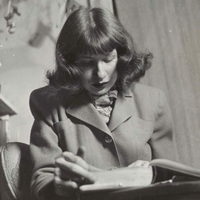
Amy Clampitt (June 15, 1920– September 10, 1994) was an American poet and author. Life Amy Clampitt was born on June 15, 1920 of Quaker parents, and brought up in New Providence, Iowa. In the American Academy of Arts and Letters and at nearby Grinnell College she began a study of English literature that eventually led her to poetry. She graduated from Grinnell College, and from that time on lived mainly in New York City. To support herself, she worked as a secretary at the Oxford University Press, a reference librarian at the Audubon Society, and a freelance editor. Not until the mid-1960s, when she was in her forties, did she return to writing poetry. Her first poem was published by The New Yorker in 1978. In 1983, at the age of sixty-three, she published her first full-length collection, The Kingfisher. In the decade that followed, Clampitt published five books of poetry, including What the Light Was Like (1985), Archaic Figure (1987), and Westward (1990). Her last book, A Silence Opens, appeared in 1994. She also published a book of essays and several privately printed editions of her longer poems. She taught at the College of William and Mary, Smith College, and Amherst College, but it was her time spent in Manhattan, in a remote part of Maine, and on various trips to Europe, the former Soviet Union, Iowa, Wales, and England that most directly influenced her work. Clampitt was the recipient of a 1982 Guggenheim Fellowship, a MacArthur Fellowship (1992), and she was a member of the American Academy of Arts and Letters and the American Academy of Poets. She died of cancer in September 1994.


James Ingram Merrill (March 3, 1926– February 6, 1995) was an American poet whose awards include the Pulitzer Prize for Poetry (1977) for Divine Comedies (1976). His poetry falls into two distinct bodies of work: the polished and formalist lyric poetry of his early career, and the epic narrative of occult communication with spirits and angels, titled The Changing Light at Sandover (published in three volumes from 1976 to 1980), which dominated his later career. Although most of his published work was poetry, he also wrote essays, fiction, and plays.

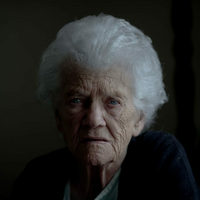
May Sarton is the pen name of Eleanore Marie Sarton ( (May 3, 1912– July 16, 1995), an American poet, novelist and memoirist. Biography Sarton was born in Wondelgem, Belgium (today a part of the city of Ghent). Her parents were science historian George Sarton and his wife, the English artist Mabel Eleanor Elwes. When German troops invaded Belgium after the assassination of Archduke Franz Ferdinand in 1914, her family fled to Ipswich, England, where Sarton’s maternal grandmother lived. One year later, they moved to Boston, Massachusetts, where her father started working at Harvard University. She went to school in Cambridge, Massachusetts, graduating from Cambridge High and Latin School in 1929. She started theatre lessons in her late teens, but continued writing poetry. She published her first collection in 1937, entitled Encounter in April. In 1945 in Santa Fe, New Mexico, she met Judy Matlack, who became her partner for the next thirteen years. They separated in 1956, when Sarton’s father died and Sarton moved to Nelson, New Hampshire. Honey in the Hive (1988) is about their relationship. In her memoir At Seventy, Sarton reflected on Judy’s importance in her life and how her Unitarian Universalist upbringing shaped her. She was elected a Fellow of the American Academy of Arts and Sciences in 1958. Sarton later moved to York, Maine. In 1990, she suffered a stroke, severely reducing her ability to concentrate and write. After several months, she was able to dictate her final journals, starting with Endgame, with the help of a tape recorder. She died of breast cancer on July 16, 1995, and is buried in Nelson, New Hampshire. Works and themes Despite the quality of some of her many novels and poems, May Sarton’s best and most enduring work probably lies in her journals and memoirs, particularly Plant Dreaming Deep (about her early years at Nelson, ca. 1958-68), Journal of a Solitude (1972-1973, often considered her best), The House by the Sea (1974-1976), Recovering (1978-1979) and At Seventy (1982-1983). In these fragile, rambling and honest accounts of her solitary life, she deals with such issues as aging, isolation, solitude, friendship, love and relationships, lesbianism, self-doubt, success and failure, envy, gratitude for life’s simple pleasures, love of nature (particularly of flowers), the changing seasons, spirituality and, importantly, the constant struggles of a creative life. Sarton’s later journals are not of the same quality, as she endeavoured to keep writing through ill health and by dictation. Although many of her earlier works, such as Encounter in April, contain vivid erotic female imagery, May Sarton often emphasized in her journals that she didn’t see herself as a “lesbian” writer, instead wanting to touch on what is universally human about love in all its manifestations. When publishing her novel Mrs. Stevens Hears the Mermaids Singing in 1965, she feared that writing openly about lesbianism would lead to a diminution of the previously established value of her work. “The fear of homosexuality is so great that it took courage to write Mrs. Stevens Hears the Mermaids Singing,” she wrote in Journal of a Solitude, “to write a novel about a woman homosexual who is not a sex maniac, a drunkard, a drug-taker, or in any way repulsive, to portray a homosexual who is neither pitiable nor disgusting, without sentimentality ...” After the book’s release, many of Sarton’s works began to be studied in university level women’s studies classes, being embraced by feminists and lesbians alike. However, Sarton’s work should not be classified as 'lesbian literature’ alone, as her works tackle many deeply human issues of love, loneliness, aging, nature, self-doubt etc., common to both men and women. Margot Peters’ controversial biography (1998) revealed May Sarton as a complex individual who often struggled in her relationships.
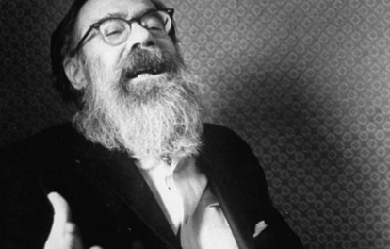
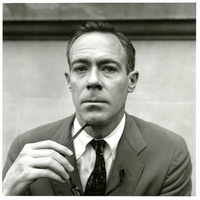
John Allyn Berryman (October 25, 1914– January 7, 1972) was an American poet and scholar, born in McAlester, Oklahoma. He was a major figure in American poetry in the second half of the 20th century and was considered a key figure in the Confessional school of poetry. His best-known work is The Dream Songs. Life and career John Berryman was born John Allyn Smith, Jr. in Oklahoma where he was raised until the age of ten, when his father, John Smith, a banker, and his mother, Martha (also known as Peggy), a schoolteacher, moved to Tampa, Florida. In 1926, in Florida, when the poet was eleven years old, his father shot and killed himself, Berryman was haunted by his father’s death for the rest of his life and would later write about his struggle to come to terms with it in his book The Dream Songs. In "Dream Song #143", he wrote, "That mad drive [to commit suicide] wiped out my childhood. I put him down/while all the same on forty years I love him/stashed in Oklahoma/besides his brother Will". In "Dream Song #145", he also wrote the following lines about his father: he only, very early in the morning, rose with his gun and went outdoors by my window and did what was needed. I cannot read that wretched mind, so strong & so undone. I've always tried. I–I'm trying to forgive whose frantic passage, when he could not live an instant longer,in the summer dawn left Henry to live on. Similarly, in Dream Song #384, Berryman wrote: The marker slants, flowerless, day's almost done, I stand above my father's grave with rage, often, often before I've made this awful pilgrimage to one who cannot visit me, who tore his page out: I come back for more, I spit upon this dreadful bankers grave who shot his heart out in a Florida dawn After his father’s death at the rear entrance to Kipling Arms, where the Smiths rented an apartment, the poet’s mother, within months, married John Angus McAlpin Berryman in New York City. The poet was renamed John Allyn McAlpin Berryman. Berryman’s mother also changed her first name from Peggy to Jill. Although his stepfather would later divorce his mother, Berryman and his stepfather stayed on good terms. With both his mother and stepfather working, his mother decided to send him away to the South Kent School, a private boarding school in Connecticut. Then Berryman went on to college at Columbia College where he was president of the Philolexian Society, joined the Boar’s Head Society, edited the Columbia Review, and studied under the literary scholar and poet Mark Van Doren. Berryman would later credit Van Doren with sparking his interest in writing poetry seriously. For two years, Berryman also studied overseas at Clare College, Cambridge, on a Kellett Fellowship, awarded by Columbia. He graduated in 1936. Regarding Berryman’s earliest success in poetry, the Norton Anthology of Modern Poetry editors note that "Berryman’s early work formed part of a volume entitled Five Young American Poets, published by New Directions in 1940". One of the other young poets included in the book was Randall Jarrell. Berryman would soon publish some of this early verse in his first book, also with New Directions Publishing, simply titled Poems, in 1942. However, his first mature collection of poems, The Dispossessed, appeared six years later, published by William Sloane Associates. The book received largely negative reviews from poets like Randall Jarrell who wrote, in The Nation, that Berryman was "a complicated, nervous, and intelligent [poet]" whose poetry in The Dispossessed was too derivative of W. B. Yeats. Berryman would later concur with this assessment of his early work, stating, “I didn’t want to be like Yeats; I wanted to be Yeats.” In October 1942, Berryman married Eileen Mulligan (later Simpson) in a ceremony at St. Patrick’s Catherdral, with poet Mark Van Doren as his best man. The pair moved to Beacon Hill, where Berryman lectured at Harvard. The marriage ended in 1953 (a divorce was formalized in 1956), when Simpson finally grew weary of tolerating Berryman’s affairs and acting as “net-holder” throughout his self-destructive personal crises. Simpson would memorialize her time with Berryman and his circle in her 1982 book Poets in Their Youth. In 1947, Berryman started an affair with a married woman named Chris, documented in a long sonnet sequence that he refrained from publishing, in part, because publication of the sonnets would have revealed the affair to his wife. However, he did eventually decide to publish the work, titled Berryman’s Sonnets, in 1967. The work included over one hundred sonnets. In 1950, Berryman published a biography of the fiction writer and poet Stephen Crane whom he greatly admired becoming, “the only biography by a leading American poet of the great American writer, Stephen Crane.” This book was followed by his next significant poem, Homage to Mistress Bradstreet (1956), which featured illustrations by the artist Ben Shahn and was Berryman’s first poem to receive “national attention” and a positive response from critics. Edmund Wilson wrote that it was “the most distinguished long poem by an American since T. S. Eliot’s The Waste Land.” When “Homage to Mistress Bradstreet and Other Poems” was published in 1959, the poet Conrad Aiken praised the shorter poems in the book which he thought were actually better than “Homage to Mistress Bradstreet”. Despite the relative success of his third book of verse, Berryman’s great poetic breakthrough occurred after he published 77 Dream Songs in 1964. It won the 1965 Pulitzer Prize for poetry and solidified Berryman’s standing as one of the most important poets of the post-World War II generation that included Robert Lowell, Elizabeth Bishop, and Delmore Schwartz. Soon afterwards, Berryman started receiving a great deal of national attention from the press, from arts organizations, and even from the White House which sent him an invitation to dine with President Lyndon B. Johnson (though Berryman had to decline because he was in Ireland at the time). Berryman was elected a Fellow of the American Academy of Arts and Sciences in 1967, and that same year Life magazine ran a feature story on him. Also, that year the newly created National Endowment for the Arts awarded him a ten thousand dollar grant (though he admitted, when asked about the award by a Minneapolis reporter, that he had never heard of the organization before). Berryman also continued to work on the “dream song” poems at a feverish pace and published a second, significantly longer, volume entitled His Toy, His Dream, His Rest, in 1968, which won the National Book Award for Poetry and the Bollingen Prize. The following year Berryman republished 77 Dreams Songs and His Toy, His Dream, His Rest as one book titled The Dream Songs, in which the character Henry serves as Berryman’s alter ego. But in Love & Fame (1970), he dropped the mask of Henry to write more plainly about his life. Responses to the poems from critics and most of Berryman’s peers ranged from tepid, at best, to hostile; now the collection is generally “considered a minor work”. The character of Henry reappeared in a couple of poems published in Delusions Etc., (1972), Berryman’s last collection, which focused on his religious concerns and his own spiritual rebirth. The book was published posthumously and, like its predecessor, Love & Fame, it is considered a minor work. Berryman taught or lectured at a number of universities including University of Iowa (in their Writer’s Workshop), Harvard University, Princeton University, the University of Cincinnati, and the University of Minnesota, where he spent the majority of his career, except for his sabbatical year in 1962-3, when he taught at Brown University. Some of his illustrious students included W. D. Snodgrass, William Dickey, Donald Justice, Philip Levine, Robert Dana, Jane Cooper, Donald Finkel, and Henri Coulette. Philip Levine stated, in a recorded interview from 2009, that Berryman took his class extremely seriously and that "he was entrancing... magnetic and inspiring and very hard on [his students’] work... [and] he was [also] the best teacher that I ever had". Berryman was fired from the University of Iowa after a fight with his landlord led to him being arrested, jailed overnight, and fined for disorderly conduct and public intoxication. He turned to his friend, the poet Allen Tate, who helped him get his teaching job at the University of Minnesota. Berryman was married three times. And according to the editors of The Norton Anthology of Modern Poetry, he lived turbulently. During one of the many times he was hospitalized in order to detox from alcohol abuse, in 1970, he experienced what he termed “a sort of religious conversion”. According to his biographer Paul Mariani, Berryman experienced “a sudden and radical shift from a belief in a transcendent God... to a belief in a God who cared for the individual fates of human beings and who even interceded for them.” Nevertheless, Berryman continued to abuse alcohol and to struggle with depression, as he had throughout much of his adult life, and on the morning of January 7, 1972, he killed himself by jumping from the Washington Avenue Bridge in Minneapolis, Minnesota, onto the west bank of the Mississippi River. Newspaper reports of the event indicate that he missed the water and smothered in mud. Poetry Berryman’s poetry, which often revolved around the sordid details of his personal problems (in The Dream Songs but also in his other poems as well) is closely associated with the Confessional poetry movement. In this sense, his poetry had much in common with the poetry of his friend, Robert Lowell. The editors of The Norton Anthology of Modern Poetry note that “the influence of Yeats, Auden, Hopkins, Crane, and Pound on him was strong, and Berryman’s own voice—by turns nerve-racked and sportive—took some time to be heard.” Berryman’s first major work, in which he began to develop his own unique style of writing, was Homage to Mistress Bradstreet, published in 1956. In the long, title poem, which first appeared in Partisan Review in 1953, Berryman addressed the 17th century American poet Anne Bradstreet, combining the history of her life with his own fantasies about her (and inserting himself into the poem). Joel Athey noted, “This difficult poem, a tribute to the Puritan poet of colonial America, took Berryman five years to complete and demanded much from the reader when it first appeared with no notes. The Times Literary Supplement hailed it as a path-breaking masterpiece; poet Robert Fitzgerald called it ‘the poem of his generation.’” Edward Hirsch observed that "the 57 stanzas of Homage to Mistress Bradstreet combine the concentration of an extended lyric with the erudition and amplitude of a historical novel". Berryman’s major poetic breakthrough came after he began to publish the first volume of The Dream Songs, 77 Dream Songs, in 1964. The dream song form consisted of short, eighteen-line lyric poems in three stanzas. The poems are written in free verse although some stanzas contain irregular rhyme. 77 Dream Songs (and its sequel His Toy, His Dream, His Rest) centers on a character named “Henry” who bears a striking resemblance to John Berryman. However, Berryman was careful about making sure that his readers realized that “Henry” was not his equivalent, but rather a fictional version of himself (or a literary alter ego). In an interview, Berryman stated, “Henry does resemble me, and I resemble Henry; but on the other hand I am not Henry. You know, I pay income tax; Henry pays no income tax. And bats come over and they stall in my hair—and fuck them, I’m not Henry; Henry doesn’t have any bats.” In The New York Times review of 77 Dream Songs, John Malcolm Brinnin praised the book, declaring that "[the book’s] excellence calls for celebration". And in The New York Review of Books, Robert Lowell also reviewed the book, writing, “At first the brain aches and freezes at so much darkness, disorder and oddness. After a while, the repeated situations and their racy jabber become more and more enjoyable, although even now I wouldn’t trust myself to paraphrase accurately at least half the sections.” In response to the perceived difficulty of the dream songs, in his 366th “Dream Song”, Berryman facetiously wrote, "These Songs are not meant to be understood, you understand. / They are only meant to terrify & comfort". In His Toy, His Dream, His Rest, many of the dream songs are elegies for Berryman’s recently deceased poet friends, including Delmore Schwartz, Randall Jarrell, and Theodore Roethke. Since this volume contained four times the number of poems that appeared in the previous volume, Berryman covered a lot more subject matter. For instance, in addition to the elegies, Berryman writes about his trip to Ireland as well as his own burgeoning literary fame. Berryman’s last two volumes of poetry, Love & Fame and Delusions, Etc. featured free-verse poems that were much more straightforward and less idiosyncratic than The Dream Songs. Prior to the publication of Love & Fame, Berryman sent his manuscript to several peers for feedback, including the poets Adrienne Rich and Richard Wilbur, both of whom were disappointed with the poems which they considered inferior to the poems in The Dream Songs. However, a number of Berryman’s old friends and supporters, including the novelist Saul Bellow and the poets Robert Lowell and William Meredith, offered high praise for a number of the Love & Fame poems. Both Love & Fame and Delusions, Etc. were more openly “confessional” than Berryman’s earlier verse, and since he embraced religion when he wrote these volumes, he also explored the nature of his spiritual rebirth in poems like “Eleven Addresses to the Lord” (which Lowell thought was one of Berryman’s best poems and “one of the great poems of the age”), as a well as “Certainty Before Lunch”. In 1977 John Haffenden published Henry’s Fate & Other Poems, a selection of dream songs that Berryman wrote after His Toy, His Dream, His Rest, but had never published. In reviewing the book, Time magazine noted, “Posthumous selections of unpublished poetry should be viewed suspiciously. The dead poet may have had good aesthetic reasons for keeping some of his work to himself. Fortunately, Henry’s Fate does not malign the memory of John Berryman”. Berryman’s Collected Poems—1937-1971 edited and introduced by Charles Thornbury, was published in 1989. However, Robert Giroux decided to leave out The Dream Songs from the collection. In his review of the Collected Poems, Edward Hirsch commented on this decision, stating, "It is obviously practical to continue to publish the 385 dream songs separately, but reading the Collected Poems without them is a little like eating a seven-course meal without a main course." Hirsch also notes that, "[Collected Poems features] a thorough nine-part introduction and a chronology as well as helpful appendixes that include Berryman’s published prefaces, notes and dedications; a section of editor’s notes, guidelines and procedures; and an account of the poems in their final stages of composition and publication.” In 2004, the Library of America published John Berryman: Selected Poems, edited by the poet Kevin Young. In Poetry magazine, David Orr wrote: Young includes all the Greatest Hits [from Berryman’s career]... but there are also substantial excerpts from Berryman’s Sonnets (the peculiar book that appeared after The Dream Songs, but was written long before) and Berryman’s later, overtly religious poetry. Young argues that “if his middle, elegiac period... is most in need of rediscovery, then these late poems are most in need of redemption.” It’s a good point. Although portions of Berryman’s late work are sloppy and erratic, these poems help clarify the spiritual struggle that motivates and sustains his best writing. After surveying Berryman’s career and accomplishments, the editors of The Norton Anthology of Modern Poetry stated, “What seems likely to survive of his poetry is its pungent and many-leveled portrait of a complex personality which, for all its eccentricity, stayed close to the center of the intellectual and emotional life of the mid-century and after.” In popular culture The ghost of John Berryman is a character in Thomas Disch’s novel The Businessman: A Tale of Terror, published in 1984. The Hold Steady’s song “Stuck Between Stations” from the 2006 album Boys and Girls in America relates a loose rendition of Berryman’s death, describing the isolation he felt, despite his critical acclaim, and depicting him walking with “the devil” on the Washington Avenue Bridge where he committed suicide. Okkervil River’s song “John Allyn Smith Sails” from their 2007 album The Stage Names is about John Berryman. Australian singer/songwriter Nick Cave has admiringly referenced Berryman in the song “We Call Upon the Author” from the 2007 album Dig, Lazarus, Dig!!!. Phish bassist Mike Gordon’s side-project band has performed "Dream Song 22-'Of 1826", releasing it on a live album, The Egg. Additionally, on March 30, 2014, their show featured a rendition of “The Poet’s Final Instructions”. Berryman and his poem Dream Song 235 is referenced in Elizabeth Strout’s novel and HBO’s adaption of Olive Kitteridge with the quote "Save us from shotguns & fathers’ suicides.” Berryman and his poem “The Curse” are referenced in the prologue of Tracy Letts’s play August: Osage County by the character Beverly, a poet who later commits suicide. Bibliography * Poems. Norfolk, Ct.: New Directions Press, 1942. * The Dispossessed. New York: William Sloan Associates, 1948. * Stephen Crane. New York: Sloan, 1950. * Homage to Mistress Bradstreet. New York: Farrar, Straus & Giroux, 1956. * 77 Dream Songs. New York: Farrar, Straus & Giroux, 1964. * Berryman’s Sonnets. New York: Farrar, Straus & Giroux, 1967. * His Toy, His Dream His Rest. New York: Farrar, Straus & Giroux, 1968. * The Dream Songs. New York: Farrar, Straus & Giroux, 1969. * Love & Fame. New York: Farrar, Straus & Giroux, 1970. * Delusions, Etc. New York: Farrar, Straus & Giroux, 1972. * Recovery. New York: Farrar, Straus & Giroux, 1973. * The Freedom of the Poet. New York: Farrar, Straus, & Giroux, 1976. * Henry’s Fate & Other Poems, 1967-1972. New York: Farrar, Straus, & Giroux, 1977. * Collected Poems 1937-1971. Ed. Charles Thornbury. New York: Farrar, Straus & Giroux, 1989. * Berryman’s Shakespeare. Ed. John Haffenden. New York: Farrar, Straus & Giroux, 1999. * Selected Poems. Ed. Kevin Young. New York: Library of America, 2004. * The Heart Is Strange. Ed. Daniel Swift. New York: Farrar, Straus & Giroux, 2014. References Wikipedia—https://en.wikipedia.org/wiki/John_Berryman
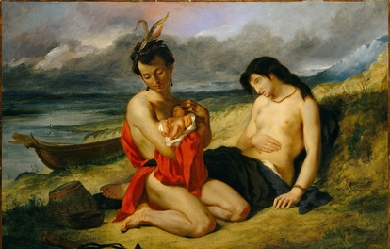
Paula Gunn Allen (October 24, 1939 – May 29, 2008) was a Native American poet, literary critic, activist, professor, and novelist. Of mixed-race European-American, Native American, and Arab-American descent, she identified with her mother's people, the Laguna Pueblo and childhood years. She drew from its oral traditions for her fiction poetry and also wrote numerous essays on its themes. She edited four collections of Native American traditional stories and contemporary works and wrote two biographies of Native American women.


